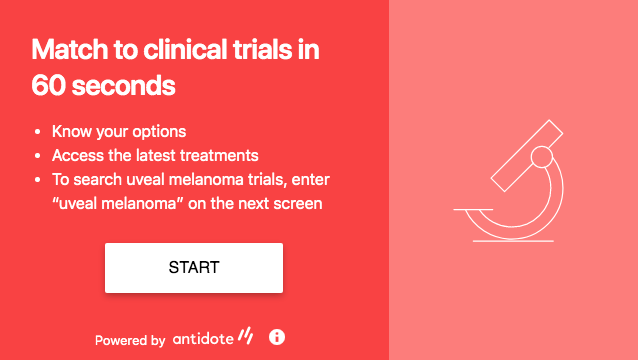
Why We’re Fighting: A Patient’s Perspective
After 14 years working in a Las Vegas hospital, and an additional five at NIH, Robert “Bob” Hill knew the importance of putting patients first—a philosophy he applied to his melanoma journey. After being diagnosed with Stage 3 melanoma, Bob chose to enroll in a clinical trial at Georgetown University, comparing the effectiveness of treating melanoma with pembrolizumab before or after surgery, what doctors call neo-adjuvant and adjuvant therapy, respectively.
It all started in January 2019 when Bob showed his primary care doctor a mole on his arm. He’d noticed it about a year before but had become increasingly concerned as it seemed to be slowly growing. His doctor referred him to Dr. Henshaw, a surgeon, who ordered further testing.
Eventually, Bob’s growing mole was diagnosed as Stage 3 melanoma. He quickly found himself, with his daughter by his side, in the office of medical oncologist Dr. Suthee Rapisuwon.
For Bob, he was in the right place at the right time.
“Dr. Rapisuwon presented me with the concept of a clinical trial where they would give me infusions of a drug before surgery,” recalls Bob. “While nothing is guaranteed, Dr. Rapisuwon was very hopeful that this might be the best option for me.”
After carefully considering all options, Bob and his daughter agreed. Bob enrolled in the trial and received his first infusion of pembrolizumab on June 27, 2019.
As part of the trial, he would receive a total of three infusions – each three
weeks apart – before surgery. Then, after he’d healed from the surgery, he’d continue receiving pembrolizumab for an additional 15 cycles.
Researchers would then compare how Bob and other patients who were on the ‘neoadjuvant’ arm of the trial compared to a group of patients who would receive the same drug for 18 cycles but only after surgery.
“I’m lucky, my daughter has a PhD in microbiology and had even run clinical trials before, so I benefited from her experience and knew that clinical trials are often the best choice for patients,” says Bob. “I also was glad that in some way, this is bigger than me – and that findings from this study would help other people in the future. That hit home for me.”
After three rounds of pembrolizumab infusions, Bob could tell that the immunotherapy was working. “I could feel the tumors on my arm just shrink away,” says Bob.

From left: Steven Lemery, MD, Christian Blank, MD, Laleh Amiri-Kordestani, MD, Charlotte Ariyan, MD, PhD, Robert Hill, and Michael Atkins, MD
Navigating Clincal Trials
At MRA, we know that many patients don’t have the benefit of a family member already well versed in clinical trials when they are making their own treatment decisions. That’s why we’ve built a series of resources to help patients understand what clinical trials are and how they may be right for them.
